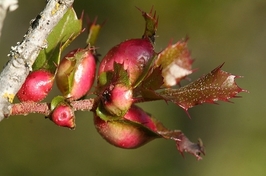
"But I am a worm, and not human” Psalm 22:6
Listen to: Lauren Daigle “How Can It Be”
https://www.youtube.com/watch?v=Wt5X91ciE6Y
Worms. Just the thought of them makes at least most city folk squeamish. Even though we know the lowly garden worm and even the maggot serve a necessary function in the circle of life, we would rather keep them out of sight and out of mind. I can remember childhood games of chasing each other with worms. How did that revolting song go, “the worms go in, the worms go out, in your stomach and out your mouth?”
In Psalm 22, David is so besieged by his enemies, brought low by their taunts and he feels like a worm. He describes his enemies as powerful bulls, ravenous lions, and ferocious dogs. He is a worm. A defenseless, living-off-the-dregs and in-the-dirt worm. One cannot get any lower than this. Yet here is an interesting twist I found on the “worm” of Psalm 22:6:
“David uses an interesting word for “worm” here. Instead of the ordinary “rimmah” David uses “tola’ath,” which means “Crimson worm” or “Scarlet worm.” This is a very special female worm that looks more like a grub than a worm. When it is time for the female or mother Crimson worm to have babies (which she does only one time in her life), she finds the trunk of a tree, a wooden fencepost or a stick. She then attaches her body to that wood and makes a hard crimson shell. She is so strongly and permanently stuck to the wood that the shell can never be removed without tearing her body completely apart and killing her. The Crimson worm then lays her eggs under her body and the protective shell. When the baby worms hatch, they stay under the shell. Not only does the mother’s body give protection for her babies, but it also provides them with food – the babies feed on the living body of the mother. After just a few days, when the young worms grow to the point that they are able to take care of themselves, the mother dies. As the mother Crimson worm dies, she oozes a crimson or scarlet red dye which not only stains the wood she is attached to, but also her young children. They are colored scarlet red for the rest of their lives.”
Fascinating, isn’t it? From the lowly crimson worm comes inspiration of sacrifice and service. David was called to service as King, which he learned to do through his hardships. Psalm 22 would inspire Jewish scholars to think of the sacrifice of Queen Esther who saved the Jewish people from annihilation. Psalm 22 is read at Purim. For Christians Psalm 22 reminds us of the saving grace through the sacrifice of Jesus. Certainly the words of Psalm 22 were on the lips of Jesus when he was crucified, and different verses of the psalm remind us of different times of Jesus’ passion (Ps. 22:1, 7, 8, 18, 31).
The crimson worm, moreover, also reminds us of Jesus, who emptied himself (Phil. 2:7) and took on a lowly status. He attached himself to the cross (1 Peter 2:24); and however we are to understand it, we are given life through the death and rising of Christ, even as he shed his own blood – the ultimate sacrifice (1 John 1:7; Hebrews 13:12; Hebrews 9:14; Ephesians 2:13). The ancients believed that life was contained in the blood (Lev. 17:14), a life which Jesus gives to us. We are marked by the life of Christ if we follow the path of love he sets before us.
So even in God’s realm, the humble Crimson worm teaches us the way of life. When we feel as low as a worm, let us remember the Crimson worm: who clings to her cross, sacrifices to forth a new birth, lets the old ways pass, and is always marked by the ancient color of life. This is the path Jesus followed. It was the past Queen Esther followed. It is our path.
What does it mean to you “to attach yourself to the cross,” or be “covered by the blood of Jesus?” How do you understand these traditional teachings? However you understand these ancient teachings, remember that sacrifice and making life better for others are a part of our journey. Let us live as well as the crimson worm.
Prayer: “God of the Humble and the Exalted, teach us to love and live sacrificially, so all may be marked by your presence.”
http://www.insectman.us/articles/biblical/crimson-worm.htm
http://www.discovercreation.org/blog/2011/11/20/the-crimson-or-scarlet-worm/
b
 RSS Feed
RSS Feed